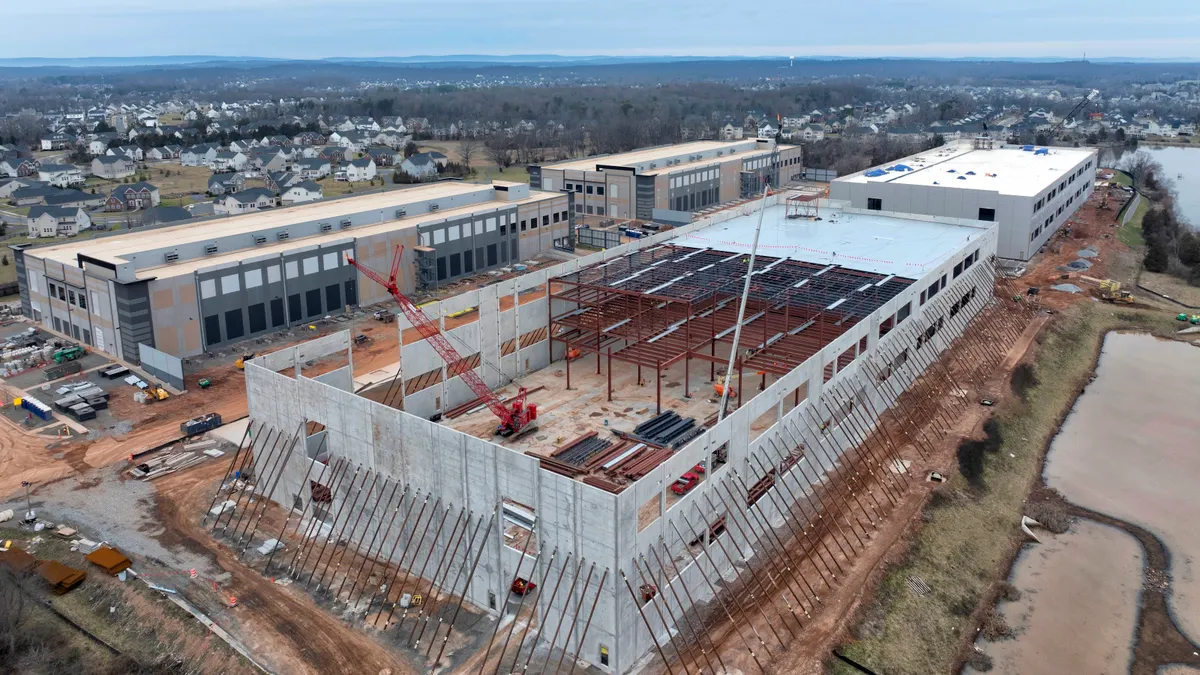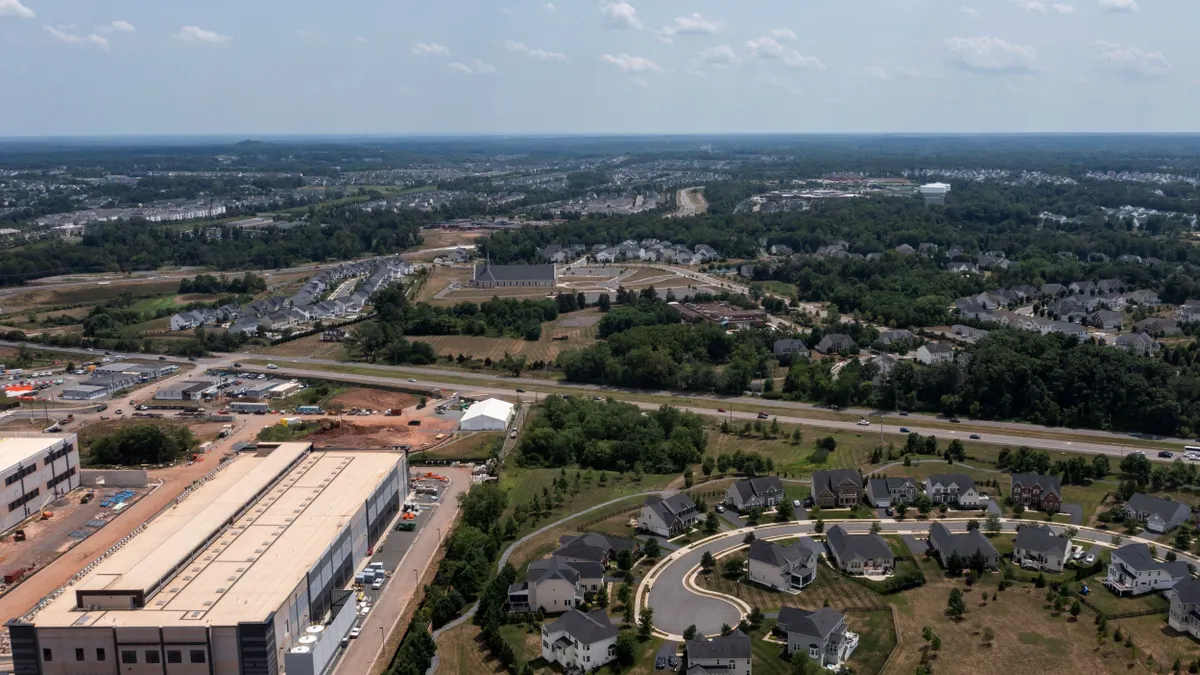Judsen Bruzgul is vice president, climate resilience and Climate Center senior fellow at ICF. Mason Fried is director, climate science, at ICF.
Extreme heat scorched its way across the U.S. this past summer. Heat domes have brought dangerous record temperatures to all regions of the country, most recently in California. Extreme heat is one of the deadliest and most widespread climate change risks and new analysis from the ICF Climate Center highlights that it is most hazardous for disadvantaged communities. These communities are least able to prepare for, withstand and recover from the impacts of extreme heat — and the scope of potentially impacted Americans within these communities is growing. According to the study findings, the number of additional people in disadvantaged communities potentially exposed to health-threatening heat waves each year could rise by 25 million by 2050 under even moderate climate change.
As an important step, the federal government launched the Justice40 Initiative, mandating that 40% of the overall benefits of federal funding for climate change flow to disadvantaged communities. While helping people in these overburdened communities has become a policy and planning priority for the federal government, a large portion of incentives will still be managed by states, local governments, utilities and nonprofits in the form of federal grants, rebates, vouchers, tax breaks and other incentives.
ICF identified five promising approaches planners are using today that climate stakeholders, including Justice40 community leaders, utilities and other organizations, can consider adopting as they leverage federal funding to adapt to the rise in extreme heat over the coming decades.
Identify location- and population-specific climate risks
Each community should seek to understand who is at greatest risk of climate hazards like extreme heat in their geographic area. Planning efforts should prioritize identifying populations at elevated risk through analyses that would vary by region and might consider current and future extreme heat conditions, as well as income, race and ethnicity, age, overall health factors, and more.
This could call for a partnership with the local and state public health departments who have detailed relevant data. Planners will need to leverage climate risk analytics platforms and information like the National Heat Health Information System to get a better understanding of how extreme heat exposure will evolve at the local level in the coming decades.
The Memphis, Tennessee, metropolitan area provides a concerning example of the intersection of potential energy infrastructure hampering heat and the overburdened communities that could face outsized exposure from electric service disruptions.
Around 43% of Memphis’s 1.32 million residents live in Justice40 communities. Those communities have faced around 10-15 energy-impacting heat days per year, or when the average daily temperature exceeds 86 degrees and electric distribution in many parts of the country may be more vulnerable. That hardly registers compared to the energy-impacting heat the energy infrastructure in overburdened Memphis-area communities will face by 2050 in either a moderate or high climate change scenario. Most of those communities will face 30 to 40 additional energy-impacting heat days by 2050 in the moderate scenario and 40 to 50 additional days in the high scenario.
Engage stakeholders
Authentically engaging communities that have been historically marginalized is an important step in understanding their specific heat-related challenges and potential adaptation strategies. Sharing decision-making power with communities and ensuring community members have real agency improves program outcomes.
For example, public buildings can serve as cooling centers during extreme heat events. However, these cooling centers must be in places that people can find and want to go to. It may be better to put them in a trusted gathering place like a church or recreation center instead of an unfamiliar government building, but finding out for sure requires asking the community and ensuring the choice is guided by its voice. It requires active listening by planners who relate to the community to best ensure community members’ voices are respected and heard. With community input, planners can develop successful adaptation approaches that would otherwise fail. Ways to engage communities that have been historically disadvantaged include:
- Leading with planners who have authentically lived and learned experience engaging the communities.
- Gathering information via surveys, community meetings or focus groups.
- Forming formal advisory groups with community residents.
- Providing seats on decision-making bodies to community residents.
- Leveraging community health workers to gather information or actively involve community members.
Pacific Gas & Electric’s Resilient Together initiative helps the utility learn how climate change impacts customers and communities throughout its service area. Engaging deeply with community and Community-Based Organizations has given PG&E a better understanding of the challenges and needs that their customers face, and solutions sought across its service area to build community resilience.
Develop a plan
Including heat strategies to help disadvantaged communities in state and local planning efforts, such as hazard mitigation plans, can help those plans meet Justice40 criteria and, therefore, increase their competitiveness for securing federal funding. The following are best practices in mitigation and adaptation plans that have already been developed:
- Consider tree cover and ensure communities have shade.
- Promote buildings with passive cooling.
- Implement “buddy systems” for older adults living alone, or people with disabilities.
- Build more inclusive heat-related health education and heat alert systems that account for the needs of those in disadvantaged communities, such as those without internet or cell phone service and those who don’t speak English.
- Recognize the potential cooling benefits of community resources in overburdened communities, such as libraries, pools, and other public recreational centers.
As a part of its Climate Change Resilience plan, New York’s Con Edison intends to invest in a Primary Feeder Resiliency program to mitigate potential network system vulnerabilities resulting from future climate-driven increases in extreme heat events. The program enhances feeders by installing modern interrupter switches and diverting primary feeders to withstand the impacts of climate change. This will provide both resiliency benefits to strengthen network operations and protect customers under extreme circumstances and blue-sky benefits, including support for the company’s clean energy and electrification goals.
Leverage multiple funding sources
There are many funding streams available to implement plans to reduce climate risks. Stakeholders can leverage multiple programs to achieve a single goal or multiple goals simultaneously.
This includes existing federal programs, such as the U.S. Federal Emergency Management Agency’s Building Resilient Infrastructure and Communities program, and new programs through the IRA and BIL, such as the Grid Resilience and Innovation Partnerships (GRIP) program. Additionally, the U.S. Centers for Disease Control and Prevention’s Building Resilience Against Climate Effects program provides planning grants for sectors including public health, emergency preparedness, energy, elder affairs, businesses and community-based organizations.
The Southern Maryland Electric Cooperative was recently awarded more than $33 million through the GRIP program to improve transmission, distribution and communications infrastructure. The projects included will provide direct benefits to more than 50 disadvantaged communities, including communities with tribal heritage.
Prioritize disadvantaged communities in program implementation
Addressing heat risk in marginalized communities will require implementing programs that specifically target those communities and ensure they are priorities in city- and state-wide programs. Programs and project implementations that account for overburdened community needs are more likely to factor in the disproportionate health and energy risks arising from greater exposure to extreme heat.
As one example, Southern California Edison has developed a community resilience metric, or CRM, to approximate the resiliency of a community to the impacts of climate-change-induced power outages. The CRM score may be used along with other utility planning and operational considerations to determine the priority for addressing the climate-vulnerability-related loss of electrical service in a particular community.
Disadvantaged communities face more exposure to extreme heat, are more sensitive and vulnerable to rising heat, and have lower adaptive capacity and less access to measures that could protect them from extreme heat. That equation means people living in overburdened communities will disproportionately suffer the negative health and energy insecurity risks sparked by extreme heat. As climate change causes extreme heat to spread and become more frequent, the health and energy insecurity impacts faced by vulnerable populations will grow, too. It’s a thorny, multifaceted challenge that requires robust climate risk assessments, adaptation planning, and program implementation. Fortunately, stakeholders can access some of the funding and expertise needed to act now.




















